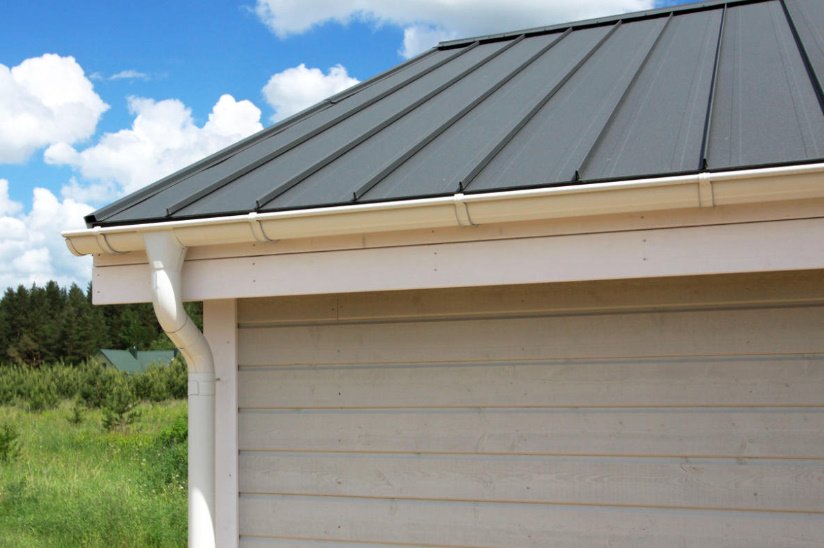
Sheet roof, numbering more than one century, it is quite popular. It is most suitable for roofs of simple configuration, as with the complexity of the shape of the roof and significantly increases the amount of waste roofing material, and therefore the cost of the roof.
Asbestos cement corrugated sheets
Time-tested asbestos cement wavy sheets of gray color, different size and depth of the wave (the so-called slate) do not pass positions. Although it has eroded the former popularity due to lack of environmental and nondescript species.
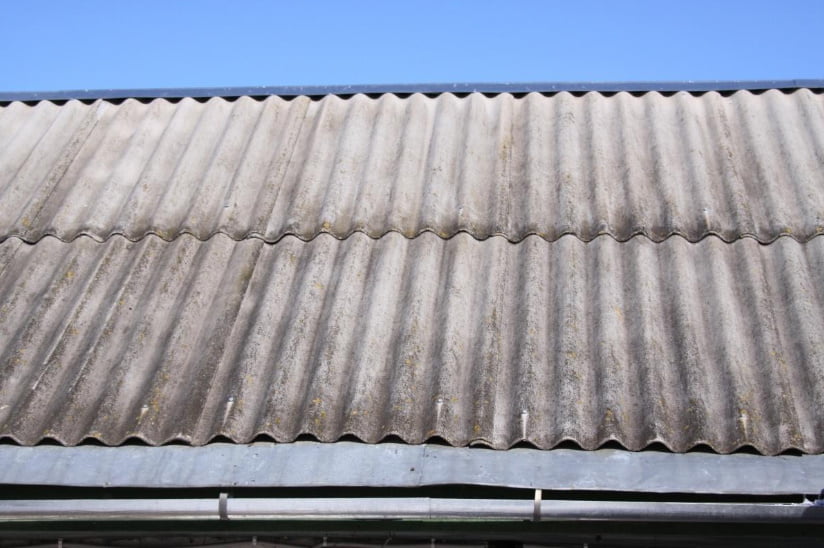
However, their harmfulness is greatly exaggerated, and staining with water-dispersion paints (in the factory or on the spot) makes them not only more aesthetic, but also more environmentally friendly and durable.
The advantages of slate
- Asbestos-cement corrugated sheets serve up to 50 years, they are resistant to corrosion, solar radiation, temperature and humidity changes, acid rain.
- What is important, they are not flammable, vapor permeable and have good heat and noise protection properties.
- They are easy to mount and handle
- They are inexpensive.
Disadvantages of slate
- Over time, in shaded areas of slate roofs can germinate mosses and lichens.
- The outer edge can break off, the paint peels off it, and the water-protective properties of such a roof are reduced.
Asbestos asbestos is of two types: regular, size sheets 1200х686х5,5 mm, and reinforced — 1000х2800х8 mm.
The bitumen-cardboard corrugated sheets
The bitumen-cardboard corrugated sheets similar in appearance to asbestos cement slates and introduced to the market under different names. They are prepared by impregnating pressed cardboard with bitumen at high temperature and pressure. Then the sheets on the front side are painted or treated with polymer coatings to increase durability and attractiveness.

Advantages:
- Bitumen-cardboard sheets are light, have good heat-insulating properties, frost-resistant, do not deform in strong heat, resistant to UV radiation, acid rain, bacteria and microorganisms.
- Sheets can be bent along and across the wave, laid at a radius of curvature of the slope of more than 5 m and even facing their vertical surfaces.
- They are easy and simple to lay on the roof, even on top of the old roof without strengthening the truss system, nailing to the crate of bars. When properly executed crate roof of Ondulin is able to withstand heavy snow load and hurricane wind at speeds up to 192 km/h.
They can be laid in whole sheets of the same color, and can be, without prejudice to the waterproofing properties, cut into 2 or 4 parts and combine colors, giving the roof personality.
Complete with sheets available ridge and gable elements, valley, nails, with closed hats etc. the Usual sizes of the bitumen-cardboard sheet — 2000х940х2,7 mm, weight — 6 kg.
American duplicate of the French Ondulin-roofing sheets Nuline, the properties of which are slightly lower than that of the French counterpart: the maximum snow load-300 kg / sq. m, resistance to wind gusts up to 160 km / h, sheet weight — 8 kg.
The disadvantages of bitumen-lined sheets
Of the downsides of bitumen-cardboard sheets can be noted that:
- guaranteed service life of only 15 years,
- they’re flammable.
Sheet seam roof
Sheet seam roof has long established itself with the best hand due to the durability and excellent performance. It is made of sheet or roll steel and non — ferrous metals-zinc — titanium, copper, aluminum-connecting flat sheets or rolls with a folding lock that requires roofers of certain qualifications. In addition to the standard methods of laying use and art.
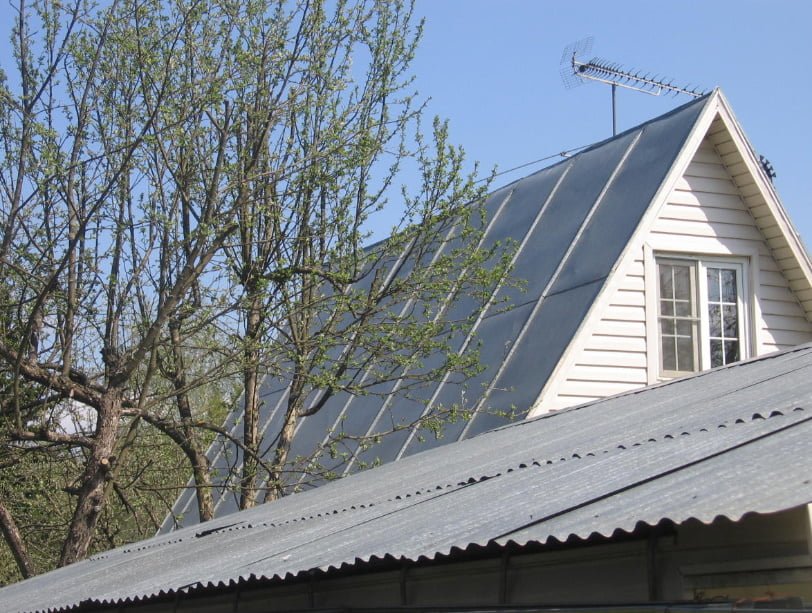
The folding lock provides a secure sealed connection, which is usually compared with a tin can. Its essence consists in bending (folding) the edges of the metal sheet to connect it to the subsequent sheet. A simple single fold, dominating on the roofs 15-20 years ago, is now replaced by a double standing (vertical) seam, which is considered the most reliable.
The cost of installation of the seam roof is high enough because of the complexity and high requirements for the skills of workers.
In order to reduce the cost of roofing recently proposed the so-called pseudo-flange roof c simplified method of connecting sheets with latching locks. This greatly simplifies the installation of the roof and reduces the cost of work. But the connection-latch loses to the double fold in tightness and can be recommended only on slopes with a slope of not less than 1:7.
The high cost of installation of high-quality seam roof makes it unprofitable to use cheap materials such as conventional galvanized steel. In this case, we can talk about the use of at least galvanized steel with various polymer coatings. There are several types of such coatings:
- the most common and cheap, resistant to weather and UV radiation, but sensitive to mechanical damage matte and glossy polyester;
- corrosion resistant, plastic and durable plastisol;
- resistant to mechanical stress, UV radiation, significant temperature fluctuations, has a stable brightness of color Pural ;
- pallidiflora with increased weather resistance.
Long-lived (100 years or more) zinc-titanium roofing sheets and strips of zinc with titanium and copper are particularly recommended for the device volume elements of roofs, spires, domes, etc., the Thickness of the roof is zinc-titanium is 0.2-1 mm.
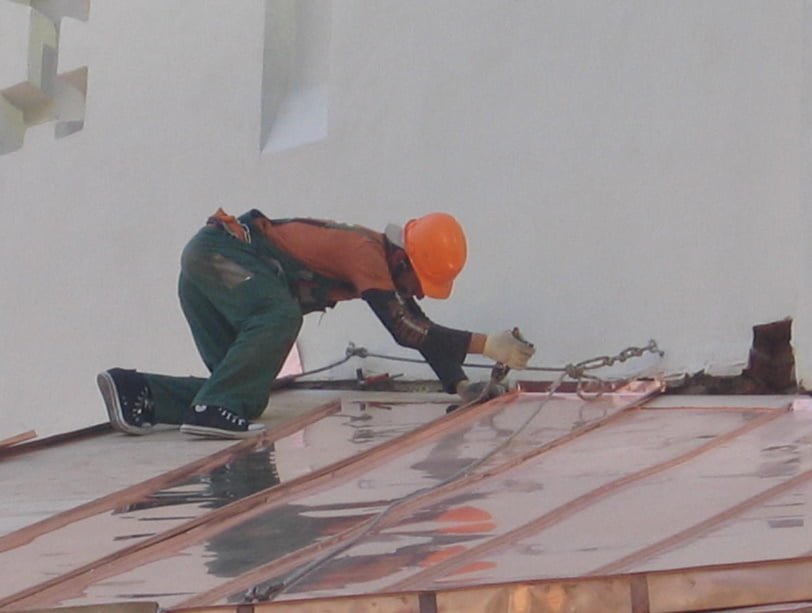
One of the most expensive, but also the most durable (100 years or more), which does not require any maintenance sheet copper roof looks amazing, and over the years, oxidized in the air and covered with a malachite-green patina, it becomes even more beautiful and durable. Today there are compositions and technologies with which help you can quickly “age” copper right on the place of laying.
Copper is easy to work and allows you to securely mount the roof of any, the most complex configuration. For roofs with a small angle (3-12°), it is the only durable and reliable material.
Copper roof does not require any care. Even with the most serious mechanical damage it is easy to repair. It is enough only to cut out a patch of copper and solder the seams. The patina will cover the patch and finding the renovated place will be very difficult.
Profiled steel sheets
A small part of the market is occupied by profiled steel sheets — predecessors of metal. A profile in the form of a wave gives the sheet more rigid, and decorative and easy installation: trapezoidal sheet stack overlap.
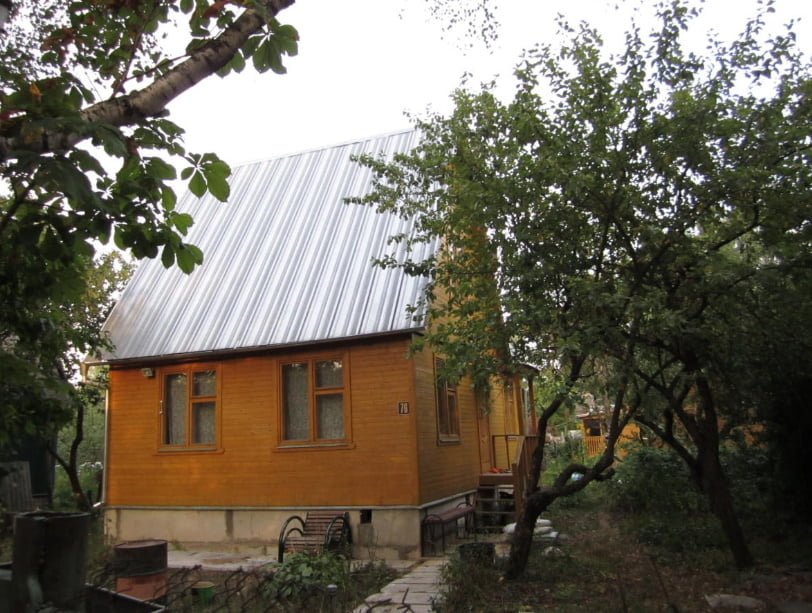
Profiling can be different: two waves on the long sides of the sheet, acting as locking locks, or waves over the entire area of the sheet.
Metal tile
Finally, one of the most popular roofing materials — metal, which is the same profiled sheets of galvanized steel or aluminum with a pattern that simulates natural tiles. Metal roofing can be laid on all types of pitched roofs, if the slope of the slope is more than 120°.
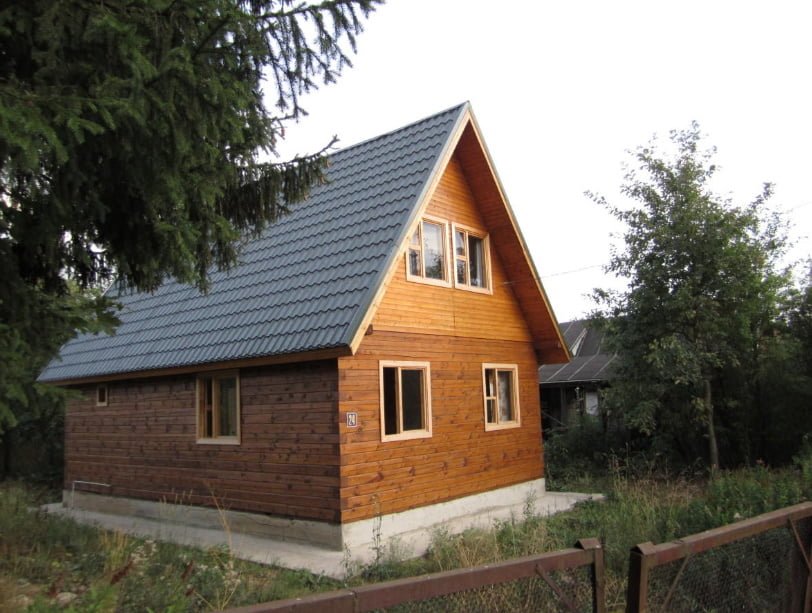
The choice of types of metal, different profile geometry, pattern, type of polymer coating and its color, is large enough. It is made of sheets of roofing steel 0.4-0.6 mm thick, covered with a layer of zinc or aluminum alloy with zinc. Both sides of the sheet are treated with a primer anti — corrosion composition, and the front side is also treated with special polymer coatings based on thermosetting resins with additives to give color.
Pros and cons of metal tile
Among the advantages of metal should be mentioned:
- low weight (5-7 kg/sq m),
- durability (with proper operation, the overhaul period is 15-20 years, and the service life is 50 years),
- the ease of installation and availability of the necessary parts,
- ecological compatibility,
- beautiful appearance,
- affordable price.
When replacing the roof of sheet metal or roofing metal there is no need to remove the old coating. Care for it is minimal.
The disadvantages of this material include:
- susceptibility to corrosion in areas of damage to the polymer coating,
- large consumption of material on the roofs of complex shapes.
By its properties, metal tile is inferior to natural tiles: it makes noise in the rain and hail, does not retain heat in the winter and is heated in the sun. It should also be taken into account that the temperature difference on the lower surface of the sheets often forms a condensate. Therefore, in the roof cake it is necessary to provide heat, noise and waterproofing.
The simplest way to check the strength of metal-whether the thickness of the metal from 0.5 mm and above-is as follows: the sheet should be put on a flat floor and step one foot on the edge. If the wave bend bends, – the metal is thin and not suitable for roofing.
A prerequisite for metal roofs is the device of a lightning rod, as metal roofs accumulate a charge of static electricity.
If during the construction of suburban housing or country house you are seriously limited in funds, then for roofing it is reasonable to use rolled roofing materials. They are available in rolls, laying is made in 2 layers. For greater durability and “fight” with ultraviolet light, the top layer is covered with a protective coating.
Laying of roll materials can be temporary, with the prospect of replacement for more elite options, when the family budget allows. As a rule, manufacturers produce rolled roofing materials of several classes.
It should be noted that the materials of this type are good not only for new roofs, they are used in the reconstruction of old roofs, which are regularly interested in our readers. So, as if specially designed for them roofing material Uniflex, which allows you to perform the installation of a new, breathable coating without removing the previous one.
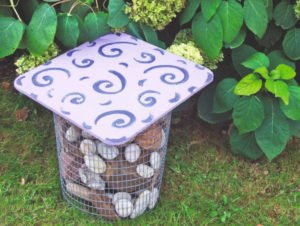



Leave a Reply